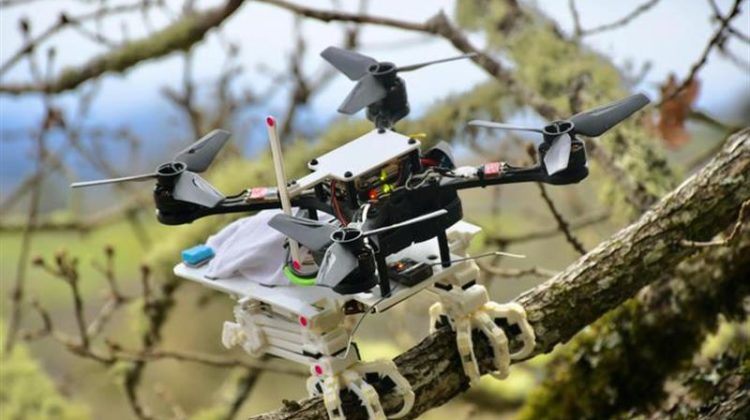
A team of engineers at Stanford University has designed a grasping robot – dubbed the ‘stereotyped nature-inspired aerial grasper’, or SNAG for short – that can catch and carry objects, and perch on a variety of surfaces.
‘It’s not easy to mimic how birds fly and perch,’ said William Roderick, a graduate student at Stanford who led the project. ‘After millions of years of evolution, they make take-off and landing look so easy, even among all of the complexity and variability of the tree branches you would find in a forest.’
The researchers’ previous studies of parrotlets – the second smallest parrot species – in which the birds were recorded by five high-speed cameras as they flew back and forth between special sensor-equipped perches of varying sizes and materials, revealed details of the physical forces associated with the birds’ landings, perching and take-off, as well as their perching behaviour.
‘What surprised us was that they did the same aerial manoeuvres, no matter what surfaces they were landing on,’ said Roderick. ‘They let the feet handle the variability and complexity of the surface texture itself.’ This formulaic behaviour, seen in every bird landing, is the reason why the ‘S’ in SNAG stands for ‘stereotyped’.
SNAG’s legs are based on those of a peregrine falcon. They contain 3D-printed ‘bones’ that took 20 iterations to perfect and two motors – one for moving back and forth, and another for grasping – while fishing line plays the role of tendons.As in bird legs, the impact of landing is absorbed and passively converted into a grasping force, which means that the robot has an especially strong and high-speed clutch that can be triggered to close in 20 milliseconds.Once SNAG’s claws have wrapped around a branch, the ankles lock and an accelerometer on the right foot tells the robot that it has landed, triggering a balancing algorithm that stabilises it.
During testing, Roderick sent SNAG along a rail system that launched the robot at different surfaces, at predefined speeds and orientations, to see how it performed in various scenarios. With SNAG held in place, he also confirmed the robot’s ability to catch objects thrown by hand, including a prey dummy, a cornhole bean bag and a tennis ball.
The next steps in SNAG’s development are likely to focus on the robot’s situational awareness and flight control, looking for ways to improve its pre-landing behaviour, while also exploring possible applications.
‘Part of the underlying motivation of this work was to create tools that we can use to study the natural world,’ said Roderick. ‘If we could have a robot that could act like a bird, that could unlock completely new ways of studying the environment.’
The research has been published in Science Robotics.



